For the Sci Fi Fan “Dying Inside” Robert Silverberg 1st edition thus vintage paperback 1984
$19.00
Very clean, “very good plus” to “near fine”, vintage 1984 Bantam paperback by Robert Silverberg.
No writing, marks, no torn, loose, or folded pages. Spine is solid, not creased. Text block edges are clean, bright, and uniform al around. Very minimal edge or surface wear to covers, covers close tight and flat. You don’t see paperbacks of this vintage this nice every day!
Really gorgeous vintage copy!
See accompanying images for full condition details.
David Selig has spent forty-one years eavesdropping on the human soul.
Born with the lonely gift of telepathy, he has drifted through life as a ghost among the living—plagiarizing term papers by raiding co-eds’ minds, seducing women by anticipating their every desire, and despising the petty, selfish thoughts he cannot help but hear.
Now, like hairline and eyesight, his power is receding.
Each day the voices dim; each silence is a rehearsal for death.
Robert Silverberg’s Nebula- and Hugo-nominated masterpiece is less science fiction than a searing, darkly comic memoir of a man forced to become ordinary.
Set against the backdrop of late-1960s New York—Vietnam protests, campus unrest, sexual revolution—Selig’s interior monologue is a dazzling torrent of literary allusion, guilt, and voyeuristic confession.
By turns erotic, bitter, and heartbreaking, Dying Inside asks what remains of identity when the very faculty that defined it slips away.
Universally hailed as Silverberg’s greatest novel, this is a rare chance to own the book Michael Dirda called “a superb novel about the great shock of middle age—the recognition that we are all dying inside.”
Will ship promptly, carefully packaged.
1 in stock
Additional information
| Weight | 16 oz |
|---|---|
| Dimensions | 7 × 5 × 1 in |
Related products
Vintage fantasy science fiction pulp magazine Fantastic Adventures April 1948
Includes the sort novel (25,000 words) "Lair of the Grimalkin" by G.H. Irwin. Front cover art by Robert Gibson Jones, back cover by James Settles. Spine is solid, no loose or folded pages, no writing internally, no tears, text edges are just ever so mildly tanned. Cover colors are bright and uniform, front and back. Cover edges are bumped, with just minimal chipping, which is somewhat unusual for these books. Back cover outer edge has some creasing along the edge Overall, a very pleasing copy, with great cover art. See the accompanying images for table of contents & full condition details. Will ship promptly, carefully packaged.
Vintage fantasy science fiction pulp magazine Fantastic Adventures April 1948
Includes the sort novel (25,000 words) "Lair of the Grimalkin" by G.H. Irwin. Front cover art by Robert Gibson Jones, back cover by James Settles. Spine is solid, no loose or folded pages, no writing internally, no tears, text edges are just ever so mildly tanned. Cover colors are bright and uniform, front and back. Cover edges are bumped, with just minimal chipping, which is somewhat unusual for these books. Back cover outer edge has some creasing along the edge Overall, a very pleasing copy, with great cover art. See the accompanying images for table of contents & full condition details. Will ship promptly, carefully packaged.
The Magazine of Fantasy & Science Fiction September 1956 Kelly Freas cover
Cool Kelly Freas cover art! No loose, torn, or folded pages. Binding is tight and intact. No writing. See accompanying images for full condition details and table of contents. Will ship promptly, carefully packaged.
The Magazine of Fantasy & Science Fiction September 1956 Kelly Freas cover
Cool Kelly Freas cover art! No loose, torn, or folded pages. Binding is tight and intact. No writing. See accompanying images for full condition details and table of contents. Will ship promptly, carefully packaged.
Vintage Sci-Fi Paperback: My Name is Legion by Roger Zelazny, 1981 Edition
Shows slight minimal aging and a little edge wear on covers, but no significant flaws (no writing, tags, marks, loose, torn or folded pages). Certainly a great addition to a vintage science fiction collection and a worthy gift! See the accompanying images for full condition details. Will ship promptly, carefully packaged, with tracking. About the book: "My Name is Legion" by Roger Zelazny is a "science fiction" story line that combines cyberpunk elements with existential depth. The book consists of three interconnected novellas ("The Eve of Ragnarok," "Kjwalll'kje'k'koothaïlll'kje'k," and "'Home is the Hangman") that follow a futuristic investigator known only as "Legion"—a man with no legal identity who manipulates global surveillance systems to solve crimes. The novellas: "The Eve of RUMOKO" – The protagonist must uncover a saboteur on a project using nuclear explosives to create artificial islands. "'Kjwalll'kje'k'koothai'lll'kje'k" – Set at a research station in the Bahamas, the hero investigates a diver’s mysterious death, possibly involving dolphins. "Home Is the Hangman" – A sentient robot, lost years before, may have returned to Earth to kill its creators. These stories are linked by their protagonist and themes of identity, surveillance, and the ethical dilemmas of technology. They are not directly connected to Zelazny’s other famous works like "The Last Defender of Camelot" or "For a Breath I Tarry". Why You Should Read It: 1) Cyberpunk Before Cyberpunk – Zelazny’s vision of a hyper-surveilled society predates Neuromancer and other cyberpunk classics, making it a fascinating proto-cyberpunk gem. 2) Philosophical & Psychological Depth – The protagonist grapples with identity, free will, and the nature of humanity, themes that remain deeply relevant in today’s AI-driven world. 3) Award-Winning Excellence – The final novella, "'Home is the Hangman," won both the Nebula in 1976 and Hugo 1976 for Best Novella. Also nominated for the Locus Award for Best Collection in 1977. If You Enjoyed These, then "My Name is Legion" is likely to be in your wheelhouse: >>John Brunner – The Shockwave Rider (for its take on computer networks and identity) >>Alfred Bester – The Demolished Man (for noir SF with a psychological edge) >>Philip K. Dick – A Scanner Darkly (for its themes of surveillance and shifting identity) Interesting Facts: The second story’s title, "'Kjwalll'kje'k'koothai'lll'kje'k," is intentionally unpronounceable, reflecting the communication barrier between humans and dolphins—a clever nod to the story’s central mystery. The title "My Name is Legion" is a biblical reference, taken from the Gospel of Mark, where a demon identifies himself as "Legion, for we are many." Zelazny chose this title to reflect the protagonist's fragmented identity and his ability to assume different roles and personas. Relevance Today: The themes explored in "My Name is Legion," such as the impact of technology on society and the nature of identity, are still relevant today. Zelazny's vision of a future where technology has blurred the lines between human and machine is both fascinating and cautionary.
Vintage Sci-Fi Paperback: My Name is Legion by Roger Zelazny, 1981 Edition
Shows slight minimal aging and a little edge wear on covers, but no significant flaws (no writing, tags, marks, loose, torn or folded pages). Certainly a great addition to a vintage science fiction collection and a worthy gift! See the accompanying images for full condition details. Will ship promptly, carefully packaged, with tracking. About the book: "My Name is Legion" by Roger Zelazny is a "science fiction" story line that combines cyberpunk elements with existential depth. The book consists of three interconnected novellas ("The Eve of Ragnarok," "Kjwalll'kje'k'koothaïlll'kje'k," and "'Home is the Hangman") that follow a futuristic investigator known only as "Legion"—a man with no legal identity who manipulates global surveillance systems to solve crimes. The novellas: "The Eve of RUMOKO" – The protagonist must uncover a saboteur on a project using nuclear explosives to create artificial islands. "'Kjwalll'kje'k'koothai'lll'kje'k" – Set at a research station in the Bahamas, the hero investigates a diver’s mysterious death, possibly involving dolphins. "Home Is the Hangman" – A sentient robot, lost years before, may have returned to Earth to kill its creators. These stories are linked by their protagonist and themes of identity, surveillance, and the ethical dilemmas of technology. They are not directly connected to Zelazny’s other famous works like "The Last Defender of Camelot" or "For a Breath I Tarry". Why You Should Read It: 1) Cyberpunk Before Cyberpunk – Zelazny’s vision of a hyper-surveilled society predates Neuromancer and other cyberpunk classics, making it a fascinating proto-cyberpunk gem. 2) Philosophical & Psychological Depth – The protagonist grapples with identity, free will, and the nature of humanity, themes that remain deeply relevant in today’s AI-driven world. 3) Award-Winning Excellence – The final novella, "'Home is the Hangman," won both the Nebula in 1976 and Hugo 1976 for Best Novella. Also nominated for the Locus Award for Best Collection in 1977. If You Enjoyed These, then "My Name is Legion" is likely to be in your wheelhouse: >>John Brunner – The Shockwave Rider (for its take on computer networks and identity) >>Alfred Bester – The Demolished Man (for noir SF with a psychological edge) >>Philip K. Dick – A Scanner Darkly (for its themes of surveillance and shifting identity) Interesting Facts: The second story’s title, "'Kjwalll'kje'k'koothai'lll'kje'k," is intentionally unpronounceable, reflecting the communication barrier between humans and dolphins—a clever nod to the story’s central mystery. The title "My Name is Legion" is a biblical reference, taken from the Gospel of Mark, where a demon identifies himself as "Legion, for we are many." Zelazny chose this title to reflect the protagonist's fragmented identity and his ability to assume different roles and personas. Relevance Today: The themes explored in "My Name is Legion," such as the impact of technology on society and the nature of identity, are still relevant today. Zelazny's vision of a future where technology has blurred the lines between human and machine is both fascinating and cautionary.
Vintage Analog Science Fiction Magazine – November 1965 – Kelly Freas Cover
No reading creases, not dog eared, no writing or tears or labels. Some discoloration to white border front cover. Back cover upper corner at spine is chipped; closes tightly, staples/binding not stressed. Stories from H. Beam Piper and John Brunner See second image for complete table of contents. Kelly Freas cover art, more Freas and John Schoenherr artwork inside. Will ship promptly, carefully packaged.
Vintage Analog Science Fiction Magazine – November 1965 – Kelly Freas Cover
No reading creases, not dog eared, no writing or tears or labels. Some discoloration to white border front cover. Back cover upper corner at spine is chipped; closes tightly, staples/binding not stressed. Stories from H. Beam Piper and John Brunner See second image for complete table of contents. Kelly Freas cover art, more Freas and John Schoenherr artwork inside. Will ship promptly, carefully packaged.





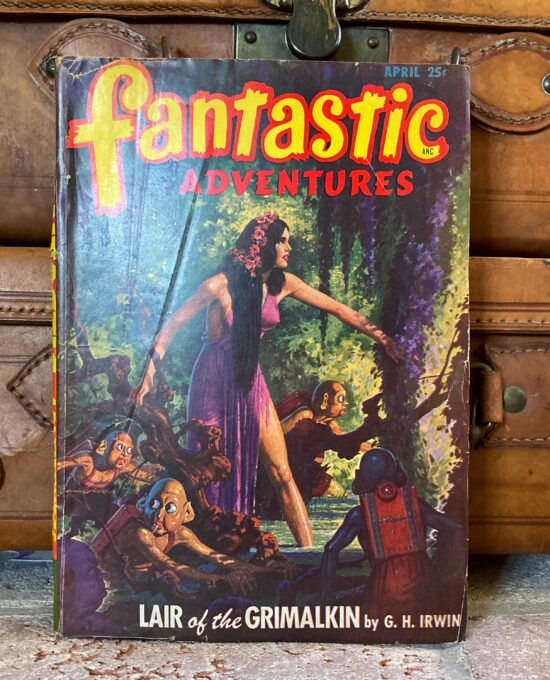
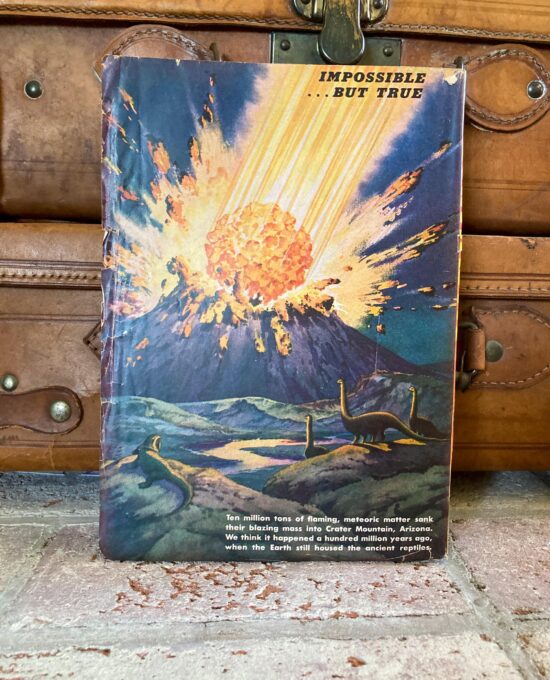
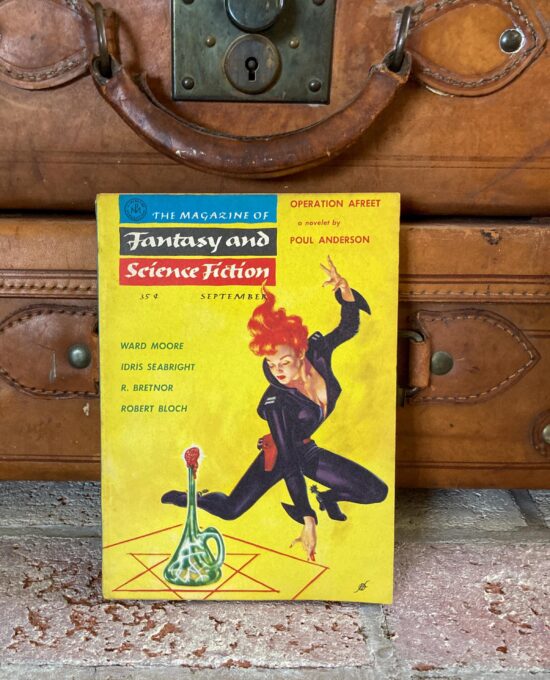
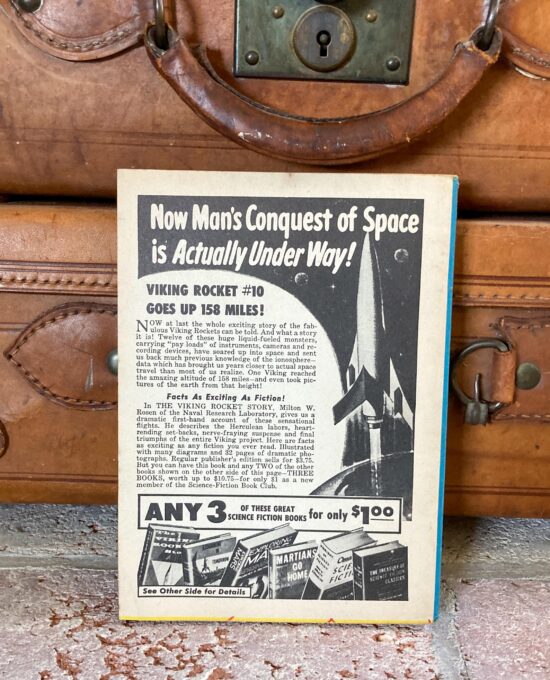
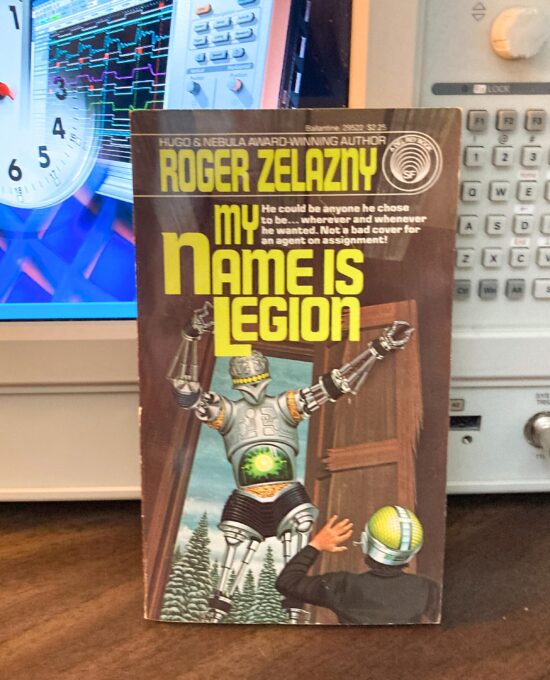
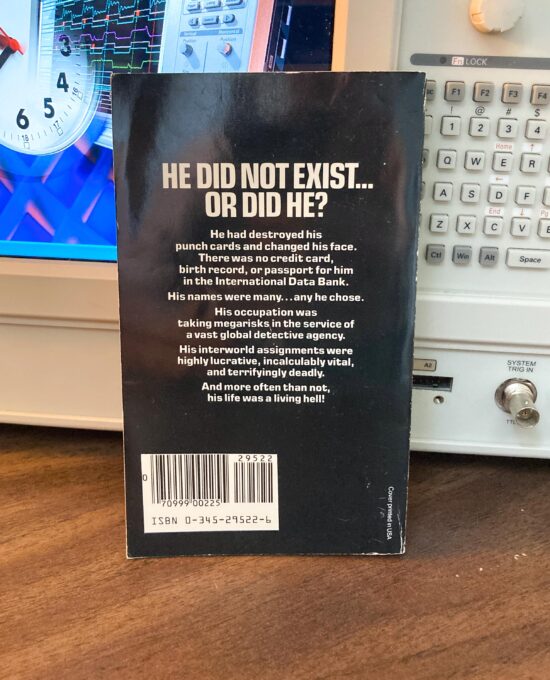
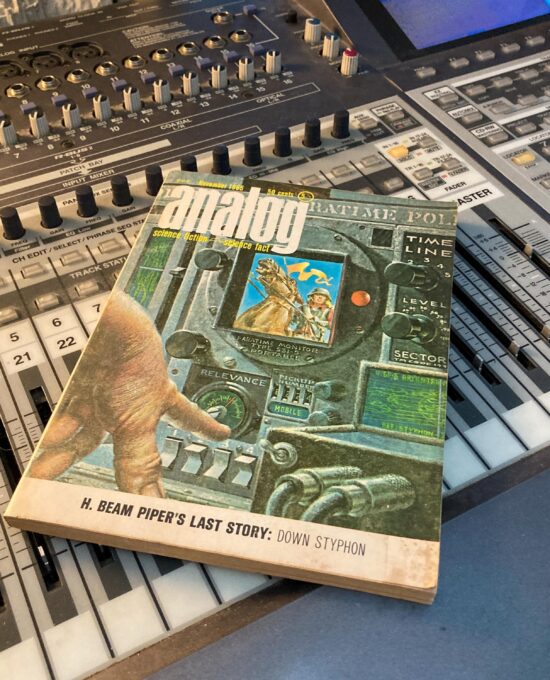
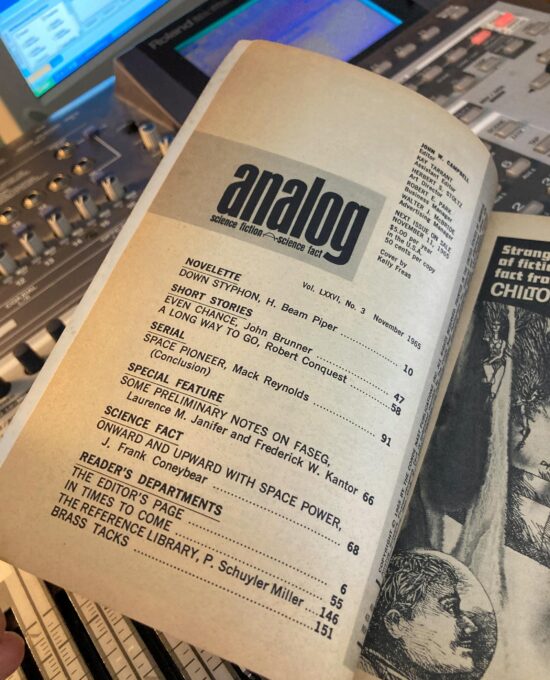

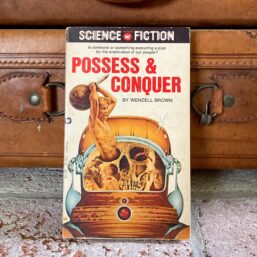
Reviews
There are no reviews yet.